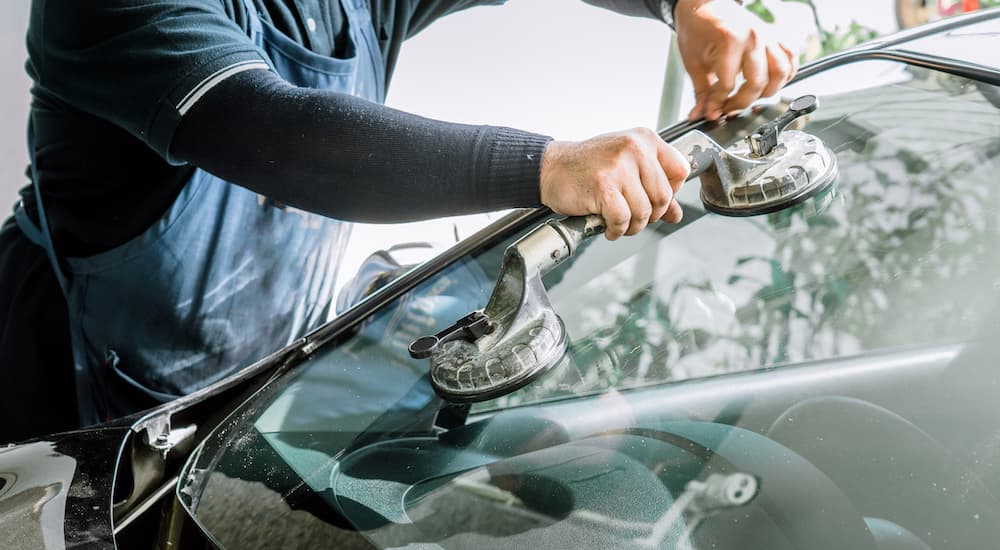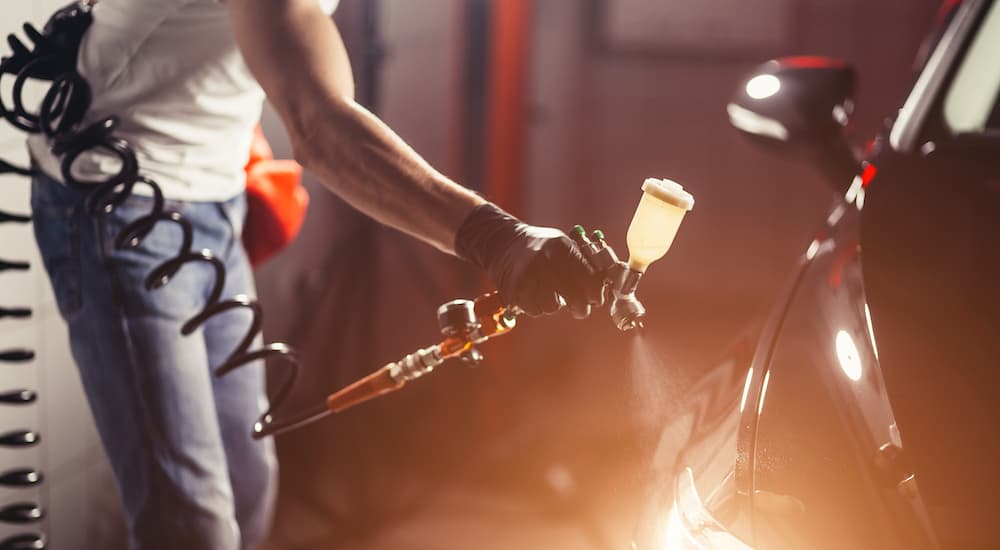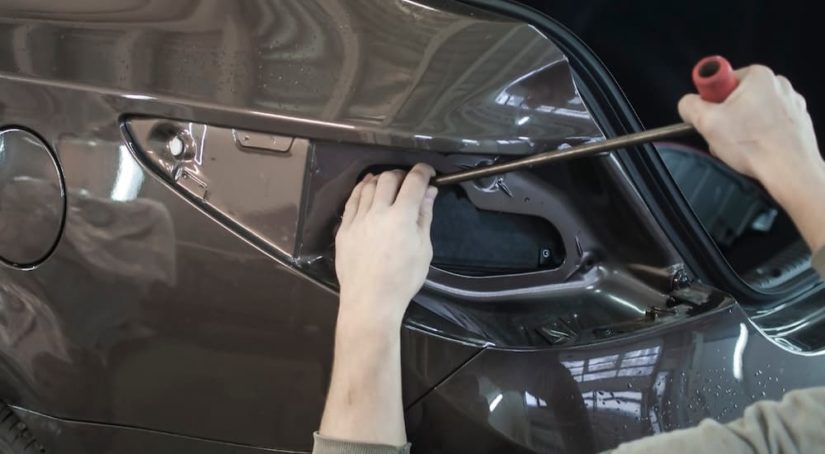Chances are, at some point in your motoring life, you’re going to get into a fender bender. There are varying degrees of auto accidents, and it’s our sincere hope that you never find yourself in a situation that threatens your life or the life of your passengers. Still, should mayhem occur and your vehicle is damaged, it is important to understand the distinction between what is a simple auto collision repair and what is a salvage title vehicle.
The definition of what exactly qualifies as a salvage title vehicle varies from state to state, but the broad definition is that a salvage title vehicle is one that has been deemed a total loss by the insurance company due to damage or theft. Afterward, a new title must be insured, declaring the vehicle salvage.
What does this all mean for you? What are the simplest to the most complicated types of auto body repair, and when, if ever, will such damage result in a complete loss? We’re here to explain it to you by going over the most common types of vehicle damage, what you can do to fix it, and what types of damage would be deemed total losses by insurance companies.
What Is a Salvage Title and What Does It Mean?
First, let’s discuss what a salvage title is and why a car might get one. As we mentioned already, a salvage title vehicle is given to a vehicle that has been deemed a total loss by your covering insurance company. This can be due to either damage or theft. Once the vehicle has been declared salvage, the insurance company can request a salvage title from the state. The state will either send it directly to the insurance company or the vehicle owner.
When is a vehicle considered salvage? This can vary depending on where you live, but generally, a car is declared salvage if the cost of the damage it receives is almost equal to or higher than the value of the vehicle. The exact percentage will vary, but it is usually somewhere in the range of damage costs totaling 70-85% of the vehicle value. This damage can be caused by a collision, fire, flood, hail, vandalism, theft, etc., so there are plenty of ways a vehicle might be declared salvage.
The Salvage title is utilized to prevent title and insurance fraud and provide more consumer protection. The salvage certificate serves as proof of ownership for the declared vehicle. After the title is granted, the vehicle will remain salvage until it is either sold for parts or rebuilt for road use and undergoes inspection. If the rebuild passes inspection, the vehicle can be re-registered for road use.
In the case of theft, the Salvage Title is retained by the insurance company until the vehicle is recovered. If good fortune is shining on you and your vehicle is found, an inspection must take place in order to assess if any damage has been done, and if it passes, it can be returned to you, and the salvage title lifted once again.
Does My Car Have Enough Damage to Qualify for a Salvage Title?
Collisions and other accidents can happen to any car, so it’s important to have an idea of what you can get repaired and what might earn your car a salvage title. Let’s now dig into common auto body repairs and see if they qualify for a salvage title.
Paintless Dent Removal
First up is paintless dent removal. This applies when your vehicle has suffered a dent, but the paintwork is in no way damaged. This could be caused by bumping into something, hail damage, or any other way you could dent a vehicle. This should be a relatively low-cost repair, as no painting needs to be done on the car, and you can sometimes take care of it yourself. This type of superficial damage would not qualify for a salvage title.

Glass Replacement
Next, we have glass repair. If your windshield, window, or any other part of your vehicle’s glass is chipped or cracking, it should be repaired as quickly as possible in order not to create further damage. You can take your car to any mechanic or auto body shop to have the glass in question fixed. Safelite is a great option for on-the-go windshield repair, though check with your insurance to see if they cover such replacements. Again, this is a low-cost repair, and broken or cracked glass would not be deemed a total loss by the insurance company.
Panel Replacement
When it comes to panel replacement, things can get tricky. As long as the important parts, like the engine, frame, and transmission are intact, the vehicle won’t be considered totaled or salvage. However, this is one of the more costly auto body repairs since it usually means that whole panels, like hoods, fenders, doors, etc., are being replaced. This is only necessary if there is substantial damage to the panel in question. A small ding or scratch, while annoying, does not qualify as a need for a panel replacement.
Any good auto body professional will be able to fix dings and scratches with no problem and for a relatively low cost. Dings can be fixed using filler, while scratches can normally be buffed out. In order to replace damaged panels, new ones need to be ordered from the manufacturer and painted to match. This drives the cost of the repair up due to the amount of labor, paint, and parts required to fix the vehicle.
Frame Repair
Frame reconstruction is another game entirely. This is probably the most costly repair you will come across in the autobody world. Anyway, when frame repair is required, the insurance company will assess the damage if the damage is the result of a vehicle accident. Different companies have different criteria for what a totaled vehicle would be, but most of the time, if there is a lot of damage to the frame – like if the front end is shoved in or the undercarriage is broken apart – the vehicle is lost.
However, simple frame cracks, rust, or dents can sometimes be fixed with relative ease, though they will still be expensive to fix. Since the frame holds the weight of the car, getting it repaired is vital to passenger safety and overall vehicle health. New frame components can be used to replace broken bits. Lasers can be used to help straighten bent areas. Weight distribution is important, so ensuring that the frame is evenly balancing the vehicle is vital. This affects drivability and fuel economy, as an unbalanced vehicle will put more strain on one side, making the engine run harder and reducing fuel economy. You get the picture.
Repainting
Painting your vehicle can bring the price of repair up and up, but most of us would rather drive a vehicle that’s one cohesive color than one that’s got a blue hood and the rest of the car is green. Paint is not only cosmetic but helps protect the car against the weather. Damage to the paint can lead to rusting or further panel cracking down the line and should be dealt with as it comes up.
Most paint jobs on a vehicle are considered cosmetic and therefore not under the salvage qualifications. While paint jobs are not cheap, they can go a long way to aiding the life of your vehicle. The less rust damage your vehicle sustains, the better. It should be pointed out that severe rust damage in specific areas can cause insurance companies to declare your vehicle a total loss, but again, that can vary greatly.

Repair or Salvage? Knowing the Difference Helps
As you can see, the line between a simple repair (even if it is costly) and something with enough damage to be considered salvage is fairly obvious, though the nuances of such a decision can vary greatly depending on the state you live in and the insurance (or lack of) you have. Still, the most common outcome of salvage title vehicles is the junkyard, where they will be broken down and recycled into something completely different. However, salvage vehicles can sometimes be saved (like in the case of theft) or rebuilt, so you may come across a vehicle with a salvage title when shopping. If this is the case, make sure you have the car thoroughly inspected before you buy it, as it may possibly have issues still remaining from the damage.



